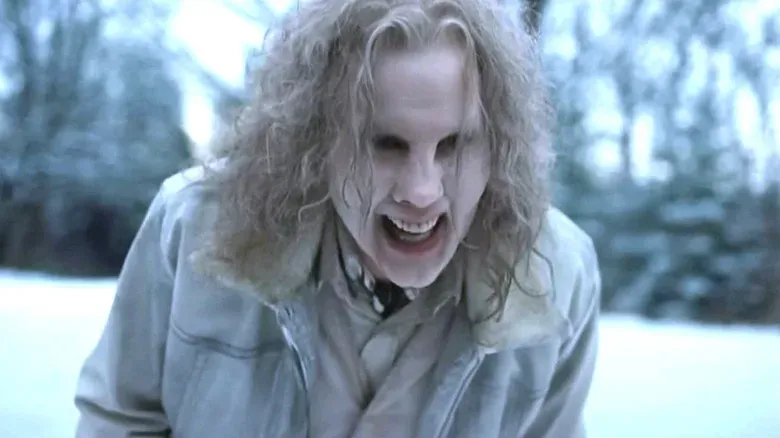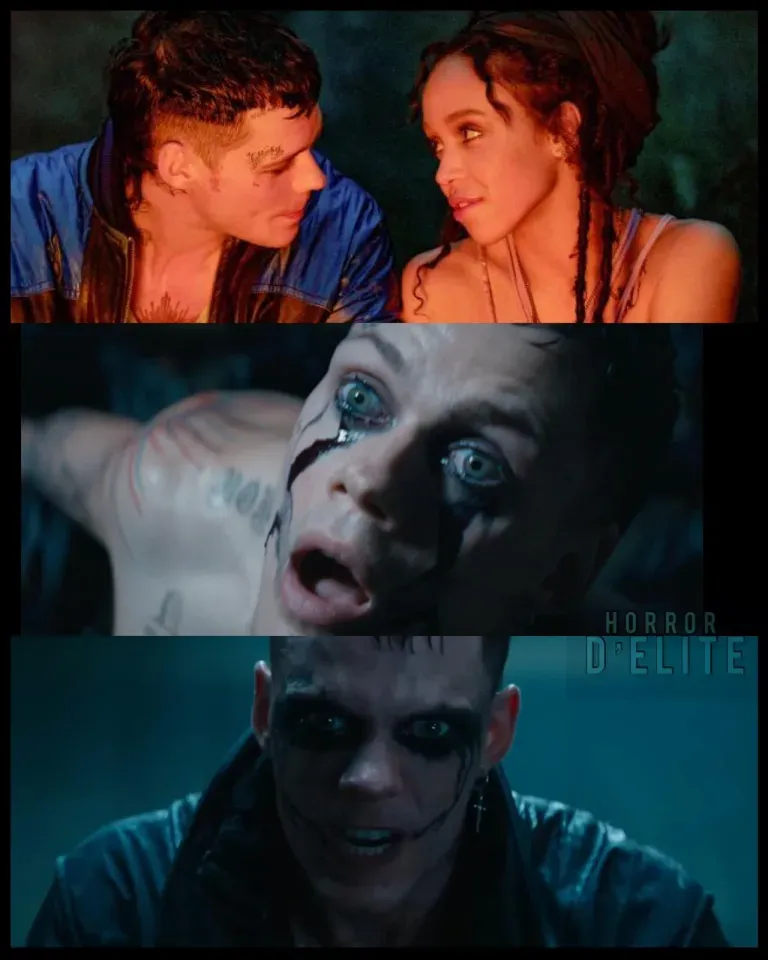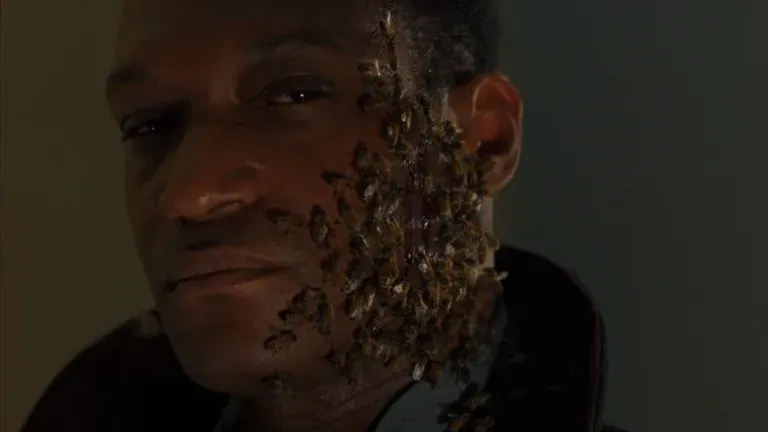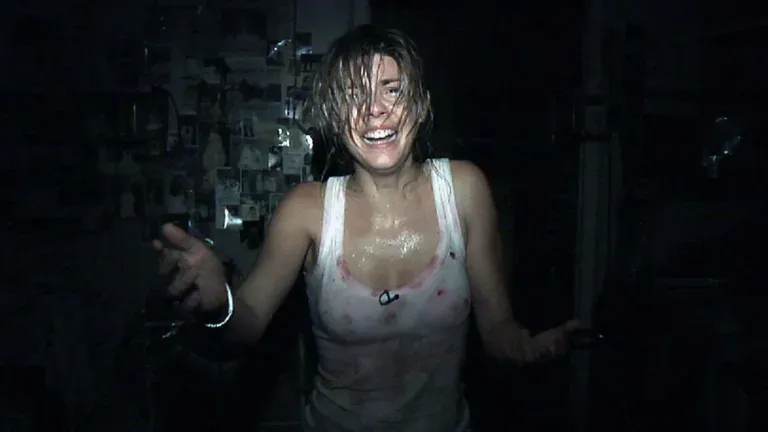Longlegs
Original Title: LONGLEGS
Year: 2024
Director: Osgood Perkins
Screenwriter: Osgood Perkins
Genre: Horror
Cast: Maika Monroe, Nicolas Cage, Blair Underwood, Alicia Witt
Where settings make the movie, where dark atmospheres bring our nightmares to the surface, making us feel isolated and powerless against those we don’t know—or perhaps even those we do.
In his fourth film, director Oz Perkins, now going by his real name, Osgood, delivers a layered work, blending horror, thriller, and crime genres, making them his own. The son of the world’s most famous serial killer, Norman Bates (Anthony Perkins), transports us to satanic, nearly lifeless settings, with few characters and thus few dialogues, which render the film unsettling and haunting. It opens with a prologue in the 1970s in which a pale-faced man in formal attire approaches a little girl in red, evoking a dark fairy tale. A time jump takes us to the 1990s, where FBI agent Lee Harker faces a ruthless serial killer who targets families or is somehow involved, though there’s no direct evidence he is the perpetrator. Only the cryptic codes he leaves for the police to decipher remain as clues. However, our protagonist seems to share a unique connection with this serial killer—a kind of shining, calling to mind The Shining.
Backed by a very effective marketing campaign that generated strong box office numbers in the U.S.—from teasers to the initial posters, to a call-in number with a pre-recorded voice message—Longlegs has already become a cult hit, along with its central figure, the titular serial killer himself. Nicolas Cage, in stellar form, embodies this killer, though in the teasers or official trailers, we never actually see him. Cage brings to life a modern-day Buffalo Bill or the doll maker from Pascal Laugier’s film. Alongside him, Maika Monroe shines, positioned as one of the latest genre “final girls,” standing alongside Mia Goth in Maxine and Lauren LaVera in Terrifier. In the film, she is alone, without a partner, husband, or children, living in a sparsely furnished, wooden-paneled house. Her only familial bond is with her devoted mother.
Perkins’ directorial choices are intriguing, starting with a 4:3 format curved at the edges, reminiscent of a Polaroid photograph, before widening the screen in later scenes, then returning to the 4:3 format for flashback scenes, signifying a kind of closure. Perkins brings themes of serial killers and Satanism—taboo subjects of the 1970s—to the forefront, mirroring the disintegration of the American family, here divided and practically nonexistent. And where it does appear, it’s drawn into a hell with no escape—a white, bloodless hell like our serial killer, a new bogeyman where “CU CU” takes on an entirely new meaning.
 Subscribe to our YouTube channel
Subscribe to our YouTube channel






